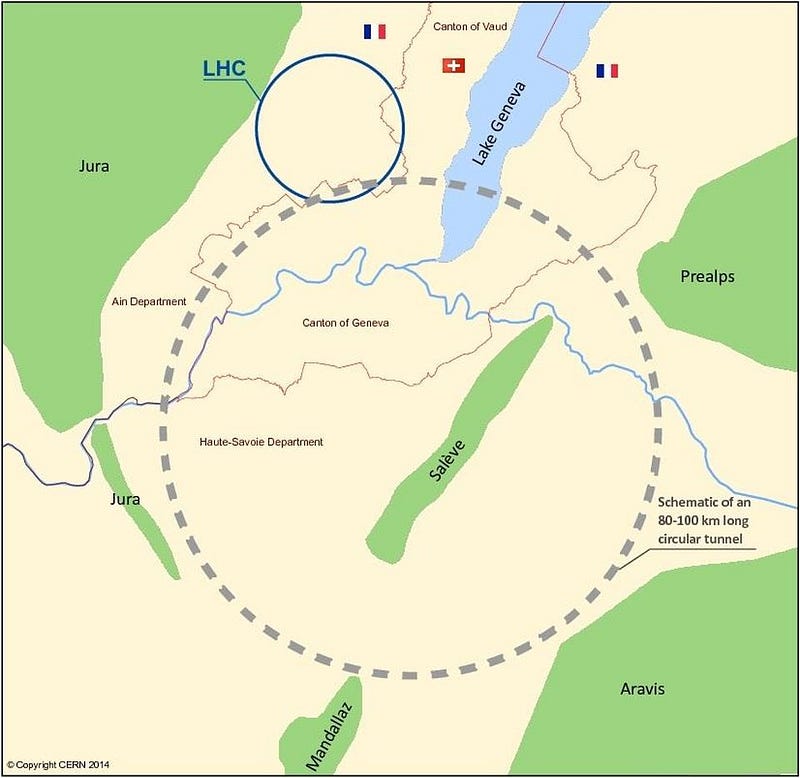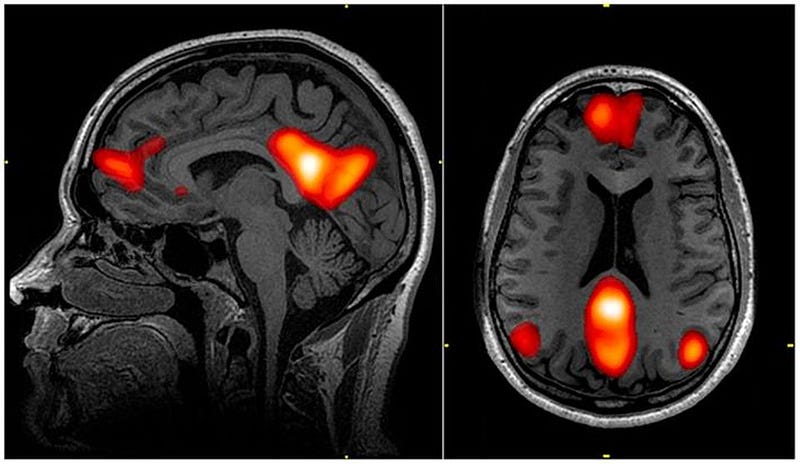The 3 Ways Science Will Get Us Through The COVID-19 Pandemic

And how it might ensure that future generations won’t have to face anything like this ever again.
As of April 6, 2020, more than 1.3 million people worldwide have tested positive for COVID-19, with over 74,000 confirmed deaths so far. Those numbers are continuing to grow at an alarming rate, with over 70,000 new cases and 5,000 new deaths per day. However, there is a tremendous bright spot that remains undimmed: the power of our scientific knowledge to guide us through these difficult times.
We no longer live in an era where we have to rely on assumptions or superstitions to understand what’s occurring. We know what the novel coronavirus COVID-19 is. We know how it spreads through the human population. We know how to fight it, how to treat it, and how to minimize the death rate from it. It’s not only time to listen to what science tells us about it, but to understand the three ways a scientific world has enabled the best of humanity’s response to it.

1.) The modern frontiers. Within just weeks of the first reported case, scientists had not only identified the microscopic virus responsible for the disease, but had sequenced its entire genome. Back when just a few hundred cases had been reported, scientists already understood how it was transmitted from person-to-person, and had quantified how contagious the disease actually was.
And when only the first few dozen people had died from it, scientists and medical professionals on the front lines were putting out reports that detailed the various stages of the disease, from asymptomatic and contagious to the various symptoms and the complications that arose in the most severe cases. By the time January was over, we already knew what the “best practices” would be, as a collective human society, to minimize the deaths and infections from COVID-19.

Even though those recommendations were not sufficiently heeded, our scientific and medical knowledge has continued to aid us in the fight against this ongoing global pandemic. Drug treatments for COVID-19 are already in the experimental phase, with many clinical trials ongoing and a number of vaccine candidates under development. Research into blood therapies, including plasma from recovered COVID-19 patients, provides hope for a treatment and possibly a cure.
The medical establishment, the healthcare industry, and the resources of hundreds of thousands of professionals are using the full force of their knowledge and resources to combat this global pandemic. Although no one can predict which avenue will prove the most fruitful the earliest, we can all play our part by listening to and respecting the advice of those professionals who possess that sought-after expert knowledge.

We should all remain at home if our businesses are non-essential: aren’t providing food, shelter, or necessary medicine. When we do venture out, we should make sure that we are clean, that we do not come into close contact with any other individuals, that we travel only short distances from our homes, and that we do not touch our faces.
We should be washing with soap and water and/or using hand sanitizer if we touch any surfaces (door handles, bags, egg cartons, etc.) that have been touched by another person. And we should all be doing this, simultaneously, with 100% compliance. That is the most safe and effective way to reduce and slow the spread of COVID-19. But all of these quality recommendations, and all of this cutting-edge research, is only possible because of the science that came before.

2.) The curiosity-driven foundations. There is value, intrinsically, to knowing something about any aspect of the natural world. We cannot know when a particular piece of knowledge will bear fruit in the realm of scientific or medical applications, but the more comprehensively we’ve studied the world, the better off we’ll be when we’re looking for a solution to the next unanticipated problem.
With respect to COVID-19, we are already seeing the payoff of a wide swath of curiosity-driven research. Studies into the population dynamics of bats led to the understanding of disease transmission of many novel animal-to-human disease strains, including COVID-19. The Human Genome Project, begun as a purely scientific endeavor in 1990, led to the widespread DNA (or RNA, in this case) sequencing that enabled us to rapidly determine how COVID-19 is evolving with a view to long-term immunity against it.

The anthropological social structures of different cultures and the work of behavioral psychologists on isolation and forms of interaction are critical right now for understanding how people are responding to the severe measures we need to be taking for the protection of ourselves and others.
Mathematical modeling of various functions, along with the epidemiology of disease spread and the social psychology of human behavior, are a necessary foundation that make it possible to put forth optimal recommendations for the actions that we should all be taking today.
And the very science of immunology, built on centuries of study of the human immune response to various pathogens — along with an understanding of the microscopic world where these critical conflicts between our bodies and the virus take place — relies on an enormous amount of basic research whose modern benefits were unimaginable when that research was first being conducted.

The curiosity-driven research of evolutionary virologists, of disease ecologists, of biophysicists, and scientists across many other fields of inquiry not only informs clinicians and policymakers, but also every cutting-edge piece of research at the frontiers of the field today. The fact is that there’s an entire Universe out there to learn about, and the lessons learned from investigating one aspect of reality oftentimes have applications down the road that we could never have predicted.
But we’re guaranteed to remain ignorant of those applications if we never conduct that necessary, foundational research in the first place. The cutting-edge advances we’re striving for today are built upon the backbone of this curiosity-driven research across a wide variety of scientific disciplines. But there’s something even more profound that either enables or limits what’s possible: the most basic science of all.

3.) The edge of the fundamental. This is the most powerful knowledge in all of science: the fundamental limits of what’s physically possible. Scientists are constantly working to push the limits of what’s known, including:
- at the high-energy frontier, looking for new types and properties of matter and energy,
- at the low-temperature frontier, looking for new physical phenomena that may emerge close to absolute zero,
- at the frontier of chemical-based life, searching for various ways that biochemical processes can arise and play an important role,
- or even at the astrophysical frontiers, where new secrets about the Universe and extreme states of matter are often discovered for the first time.
In times of crisis, these lines of inquiry are often the first to be treated as “disposable,” but disposing of them will fundamentally limit everything we’d build upon them.

Imagine trying to uncover the molecular structure or the DNA sequence of an infectious pathogen if we didn’t have atomic theory as our foundation.
Imagine attempting to deliver neutron therapy to a cancer patient without the understanding derived from high-energy particle physicists.
Imagine using an X-ray as a diagnostic tool, or a scanning tunneling electron microscope, without a knowledge of the wave-particle nature of quantum physics.
Not only would these innovations have been impossible without an advanced fundamental knowledge of the world, but they would have been unimaginable from a scientific point of view. Many of today’s most powerful medical interventions are rooted in the fundamental discoveries made at the frontiers of the physical world, from MRIs to positron emission tomography (PET) scanning to radioimmunoassays and many more.

If we want superior tools to combat the threats that humanity will face not just today, but 50 to 100 years down the line, now is the time to redouble our efforts. Scientific investment needs to occur not only on the front lines of the current crisis, but on a wide-variety of curiosity-driven frontiers, including at the fundamental level itself. The payoff comes simply by gaining that knowledge, which won’t be obtained in any other way.
The novel coronavirus COVID-19 is having a tremendous impact on our world at the present time, but our response can demonstrate just how far we’ve come as a civilization. The entire Universe obeys the same scientific rules, and the better (and more fundamentally) we study it, the better prepared we’ll be for the challenges that come our way. The investments we make today will lead to tomorrow’s knowledge, and in turn, the day after tomorrow’s tools and techniques that lead to a better world for all of humanity.
Ethan Siegel is the author of Beyond the Galaxy and Treknology. You can pre-order his third book, currently in development: the Encyclopaedia Cosmologica.





